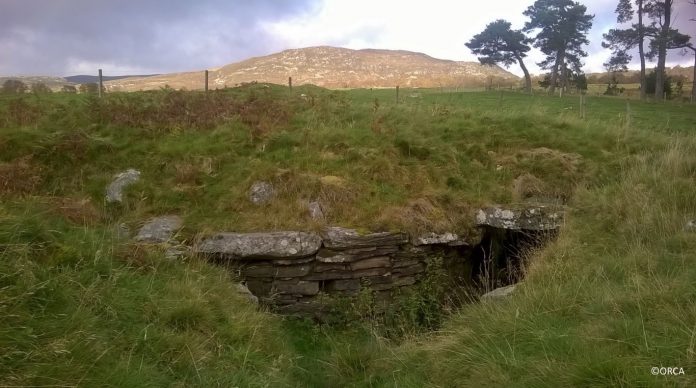Commercial archaeologists from the Orkney Research Centre for Archaeology (ORCA) have uncovered a possible Iron Age structure and pottery the Crubenmore to Kincraig stretch of the A9 to be dualled.
The dualling of the A9 trunk road from Perth to Inverness is one of the largest infrastructure projects in Scotland. Over 80 miles of road will be improved over the next 8 years to improve the quality and reliability of journeys along the road. In common with all major infrastructure projects, Transport Scotland has appointed archaeologists to evaluate the area for traces of unknown archaeology.
Archaeologists from ORCA, have been working alongside design consultants CH2M Hill / Fairhurst Joint Venture, and ground investigation contractors, opening trial trenches to investigate several anomalies identified in a geophysical survey.
Anomalies close to known souterrain
The interest of the archaeologists was heightened further as the ground investigation works are located close to a prehistoric souterrain called Raitt’s Cave near Kingussie (see main image). This underground structure is a scheduled monument and is very large compared to most similar structures in Northern Scotland, and yet soutterains in general remain enigmatic as their use is still debated by archaeologists across the UK. They may have been used for storage, defence or some unidentified ritual, but commonly are associated with settlement in the Bronze and Iron Ages.



The preliminary work continued as the archaeologists investigated the anomalies. Traces of a previously unknown structure were quickly identified together with a scattering of pottery sherds and a possible stone Ard point – a stone worked into a point for use as part of a plough. The pottery was identified by Martin Carruthers (Iron Age specialist at the University of the Highlands and Islands Archaeology Institute) as a collection of what is probably early Iron Age sherds. These finds led the archaeologists to believe that the structure may be associated with the souterrain.
Peter Higgins, Senior Project Manager ORCA, commented, “We are tremendously excited by these finds in this archaeologically significant location. We are also pleased that we can work with Transport Scotland to make sure that these finds are recorded correctly without impeding the roadworks so vital to this Scotland’s economic development.”
Keith Brown Cabinet Secretary for Economy, Jobs and Fair Work said:
“Our work to dual the A9 will bring undoubted improvements for road users including improved journey times and significantly improving road safety. At the same time, the ongoing design work has opened a window into Scotland’s past. We have already been able to shed more light on the Battle of Killiecrankie and now these latest finds on another stretch of the route offer evidence for experts on how our prehistoric descendants lived in the Iron Age.”


